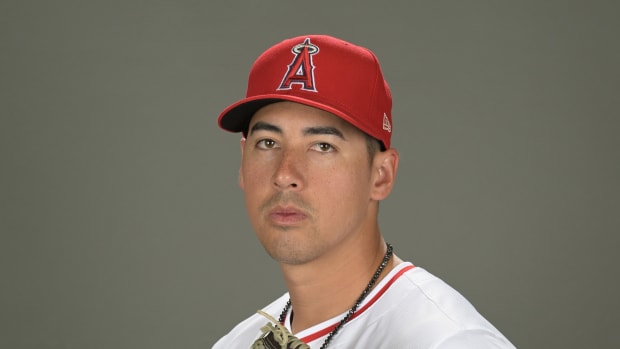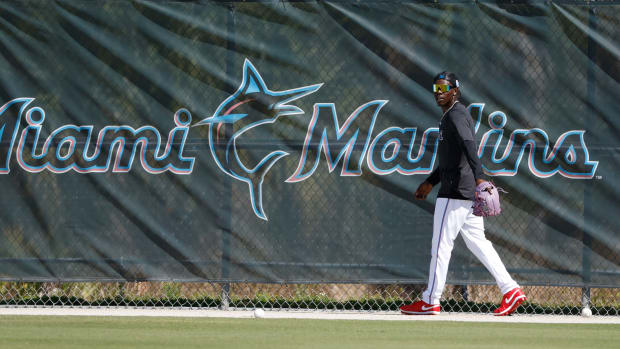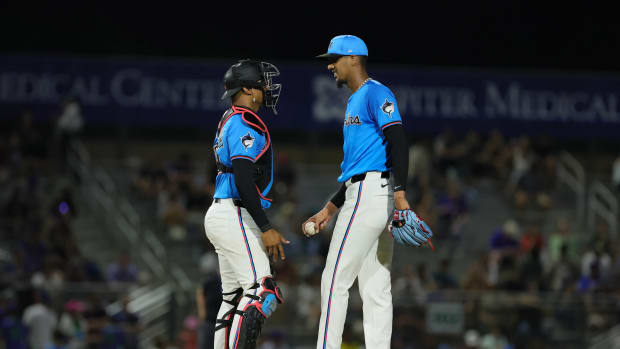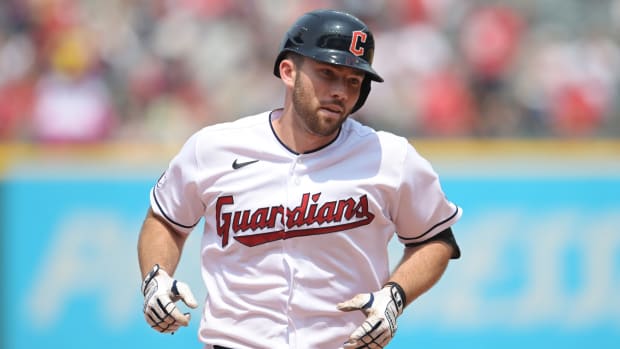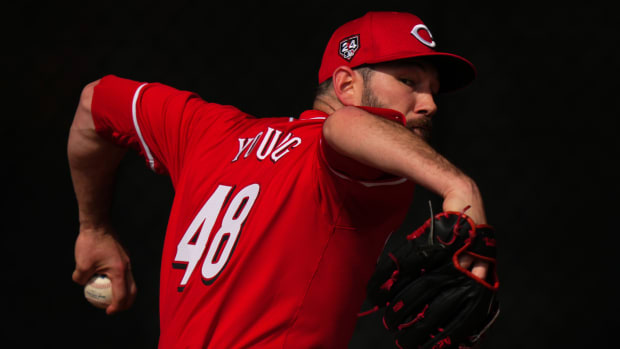Padres' Rookie Chris Paddack Attacks Hitters With Old-School Approach, New-School Attitude
In some ways, Chris Paddack is very much of the new school. He screams after big strikeouts. He shows a ton of emotion on the mound. He starts good-natured beefs with opponents. And, of course, he was born in 1996, so he really can’t help but be new school. Paddack is everything refreshing about baseball in the modern era, a new breed of player with a healthy, fun attitude coming to the fore.
Paddack is off to a fantastic start this season, amassing a 1.55 ERA, 0.69 WHIP and 46 strikeouts against 10 walks in 40 2/3 innings across seven starts. He hasn’t had a bad outing, allowing no more than three runs in any start, and two or fewer in six of seven. If not for a strict pitch limit, he’d likely have a 100% quality start rate. It’s been a brutal season for the art of pitching at large, but Paddack has been one of the shining exceptions.
While the 23-year-old rookie is undoubtedly of the new school from an attitude perspective, his success is rooted in the most old-school tactic of them all. Paddack is working ahead of hitters more often than any pitcher in the league, and putting them away with a veteran’s savvy once he does get ahead.
Paddack has thrown a first-pitch strike to 75.3% of the batters he has faced this season, tops in the majors; he’s one of four pitchers north of 70%. Miles Mikolas led the league last year with a 70.8% first-pitch strike rate, and that was the first time a pitcher topped 70% in a season since 2015. Fangraphs’ first-pitch data goes back to 2002, and the highest first-pitch strike rate in that time belongs to Brad Radke, who started 72.8% of the batters he faced in 2005 with a strike.
Getting ahead is one of the fundamental tenets of pitching success. There is no greater one-pitch difference than 0-1 against 1-0. After an 0-1 count, hitters leaguewide are slashing .212/.262/.352. After 1-0, they’re hitting .261/.384/.461. When Paddack gets ahead, as he has done three-quarters of the time this year, it's been lights-out for hitters. Opponents are slashing a measly .135/.172/.202 against Paddack when they fall behind 0-1. In 93 such plate appearances, hitters are 12-for-89 with 34 strikeouts and three walks.
Paddack lives in the strike zone, especially on the first pitch of a plate appearance. Statcast has added a nifty new tool to its search function this year that it calls attack zones. Instead of the simple nine-square strike zone we’re all used to seeing, or even a larger one that takes into account areas off the plate, Statcast divides the entire hitting area into 36 attack zones. The first nine zones are in the heart of the plate, while the next nine, which Statcast calls the “shadow,” encompass the areas on the edges of the strike zone.
Paddack has faced 150 batters this year. Of those 150, 130 have seen a first pitch in either a heart or shadow zone. Paddack isn’t getting ahead of hitters by inducing swings on chase pitches; he’s getting ahead by attacking the zone. Here’s a scatter plot of all 150 of his first pitches this season.
When I first started digging into Paddack and came across his elite first-pitch strike rates, extreme success after getting ahead 0-1, and his permanent residence in the strike zone, my initial thought was, “OK, the book is going to get out, hitters are going to adjust, and we’ll see a ton of first-pitch swings against him.” Here’s the thing, though. Hitters are already quite aggressive against him on the first pitch of a plate appearance.
Before Friday’s slate of games, 93 pitchers have faced at least 150 batters this season. Among those 93, Paddack ranks 31st in first-pitch swings, meaning that only 30 pitchers in the majors have had more of their first pitches swung at than him. What’s more, Paddack has faced exactly 150 batters, so all 30 of those pitchers have had more opportunities for first-pitch swings. Counting only pitches in the heart and shadow attack zones, Paddack ranks 19th in first-pitch swings. Unfortunately, no site tracks first-pitch swing rate for pitchers in a user-friendly way, so we can’t compare Paddack to his counterparts on a rate basis. Given that he’s in the top-third in total swings despite facing the fewest batters, though, we can safely assume he has one of the highest first-pitch swing rates among all starting pitchers.
We may not be able to compare Paddack’s first-pitch swing rates to those of other individual pitchers without a tedious process that, in fact, won’t add much value to this column, but we can compare his rates to the league-average. Hitters have swung at 35.3% of Paddack’s first pitches, and 39.2% of those that in the heart and shadow zones. Leaguewide, hitters have offered at 28.6% of first pitches, and 36.7% of those in the heart and shadow zones. In other words, hitters are already as aggressive as they can realistically be against Paddack in 0-0 counts. There’s not much more they can do to counteract his ability to get ahead.
If there’s one part of Paddack’s game that hitters can attack to keep from falling behind, it’s his reliance on his fastball and changeup. Those two pitches combine for a 90% usage rate, with the fastball at 57.5%, and the change at 32.5%. His curveball accounts for the other 10% of his pitches. Now, Paddack’s pitch usage makes a ton of sense. After all, if your fastball averaged 94.5 mph and you had a changeup that looked like this that you were confident using against hitters from both sides of the plate, wouldn’t you throw a ton of those two pitches?
Thus far, the curve is just a show pitch. However, Paddack has enough confidence in it to use it more often early in the count, especially on the first pitch, than he does later in the count. He has thrown 23 first-pitch curves, good for a usage rate of 15.3% to start a plate appearance. Fifteen of those 23 curves have been strikes, including 10 called strikes, one whiff, three foul balls, and one ball put in play for a flyout. Let’s take a look at a couple of those curves.
Paddack’s changeup is his best whiff and out pitch, but he throws it less often in 0-0 counts than he does on the whole. Meanwhile, he throws the fastball and curve more often in 0-0 counts than he does as a share of his total pitches. If I’m facing him, especially if I’m a righty, I’m going up there looking either fastball or curve to start the plate appearance. As different as those pitches are, I’m going to be able to identify it out of his hand if I’ve written off the changeup before stepping to the plate.
Of course, this is nothing more than an attempt to make the best of a bad situation as a hitter. Paddack’s ability to get ahead, his dominant changeup and his lack of reliance on chase pitches make him a brutal assignment for any hitter. This isn’t a case of a pitcher using unfamiliarity to get off to a hot start. Paddack is for real.
































